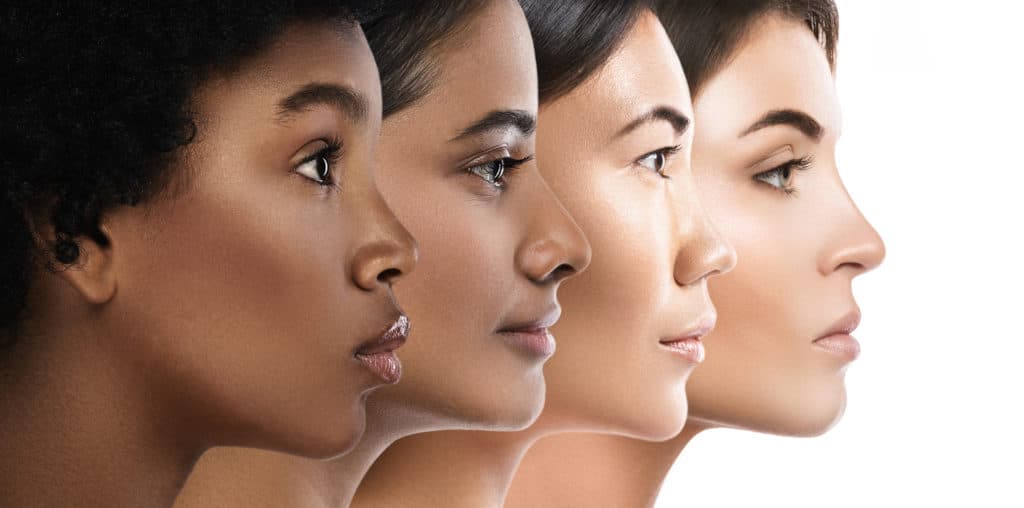Isn’t it Time We Began Embracing Diversity in Modelling?
Modelling and diversity (the measure of difference within a workplace) have not always gone hand in hand. It’s fairly well-known that race, abilities, age, gender, and sexual orientation are rarely showcased or celebrated on the runway.
What you might not realise, however, is that it isn’t just a problem for models; whether it’s behind the scenes or in the boardroom, there’s a lack of diversity across all levels in the fashion industry.
But as we begin to see societal norms changing, does this signify a much-awaited change for the modelling industry?
What is a Diversity Model?
A diversity model is someone who represents the unrepresented whether that’s on the runway, in advertising or on social media. That includes diverse people who don’t conform to the usual “model” aesthetic of a skinny waist, perfectly-proportioned face and 5″7 (at a minimum) stature.
Diversity models are important because they represent everyone. They help to improve perceptions of beauty. Rather than promoting a difficult and unachievable “norm” to the masses, diversity models represent real people. They have the power to build confidence and understanding in people, no matter what they look like.

Who Can Be a Diversity Model?
The beauty of it is that anyone can be a diversity model. It doesn’t how old you are, what size you are, what sex you are, what environment you are from; diversity models encompass and represent everyone.
Being diverse means being inclusive and accepting of everyone, no matter what their flaws.
Why Is There No Diversity in the Modelling World?
There has always been an unconscious bias in the fashion environment.
The term “beauty” has been pigeon-holed to represent a very niche, specific person. Diversity of thought is prevalent and often used as an excuse for a lack of diversity in the workplace (this is the idea that people don’t need to look a certain way or identify with an underrepresented group in order to showcase diverse viewpoints).
Racial diversity is a huge issue, with 78% of models being white in advertising in 2016 (shockingly, this is a figure which has actually decreased since 2015 when 84.7% of models were white).
Sadly, stereotypes and biases have been left uncorrected for a long time. Changing the habit of one person is difficult; when that person is a company with hundreds and thousands of people, it becomes even harder.
Are Times Changing?
Fortunately, due to the rise of social media, the public is now able to make their thoughts well-known and difficult to ignore. The public is desperate to see more achievable, realistic representations of themselves and their community on the runway and in their magazines. They want to see more inclusive beauty. They don’t agree with diversity of thought.
More people are starting to push for change – 57% of employees think their workplace should be more diverse. Businesses need to move beyond the stereotypes to be innovative and understanding of its customers, thereby outperforming the competition and maximising employee productivity.
According to McKinsey & Company, accepting diversity in the workplace affects businesses not only socially but numerically. It can increase economic performance by as much as 2.2 times for profitability and 2x stock valuation.
And according to the American Sociological Association, companies with the highest rate of racial diversity brought in nearly 15x more sales revenue on average than those with lower diversity levels.
This is finally starting to be reflected in large organisations. Fashion company Victoria’s Secret seems to have finally bowed to the pressure for more diverse models. They cancelled their 2019 show after a string of accusations against them to do with harassment and bullying, not only regarding its models but also for some employees.
More fashion brands are starting to use diverse models in their advertising campaigns. H&M featured a model with downs syndrome and many brands have followed suit. Marks and Spencers have also introduced the Easy Dressing line for disabled children.
Qualities of a Diversity Model
The qualities of a diversity model differ hugely to regular runway models. For a start, the regulations are far less strict; you do not have to be a certain weight, size, sex or ethnicity.
To be an agent of change, you will need to be confident in yourself. The current fashion environment means it’s difficult for a diversity model to be hugely successful. This means you will need to have a lot of grit and determination to fight the way things currently are.
You must really believe in yourself and your cause. Training the public to change their mindset is a long process. You will need to improve understanding of diversity and educate the masses to why it is so important.
It is not just the masses that need educating. An organisation that is used to doing things a certain way will also need to be taught why having a diverse workforce is better.
Good mental health is important as a diversity model (as it is for all models). All models face a certain amount of critique (particularly on social media, where everyone has an opinion that is easy to share) and it’s important to be able to brush this off and not take it to heart.

How to Become a Successful Diversity Model
There are a few ways to become a diversity model.
Firstly, it’s important to build up your social media presence. This is so you can share your inclusive stance with followers and create a community of like-minded people in the process.
It’s important to understand and be able to share the value of having diversity in the workplace. Training others to improve their mindsets will require lots of positivity and patience.
How Can Diversity Models Find Work?
Finding work as a diversity model can be as difficult as it is for regular models to find work. There are some things you can do to improve your chances of finding work:
- Have a great social media account. This enables potential jobs to find you (whilst also giving you plenty of practice in front of the camera).
- Have a great portfolio. Showcase your modelling potential with a professional portfolio you can show to prospective clients.
- Communicate with and collaborate with like-minded, similar people. By sharing content over both platforms, you will reach a wider audience – and hopefully catch the eye of a brand or two.
- Reach out to brands whose models reflect your ethos and who already have a diverse workforce. If you know a brand already works with diverse models, reach out to them. Similarly, don’t waste time with a brand you know doesn’t have racial diversity yet.
- Find modelling agencies who work specifically with diverse models and try to join one. Don’t be disheartened if you struggle – joining an agency is very competitive as they have thousands of applications weekly.

Top UK Support Services for Diversity Models
There is a charity called ‘Models of Diversity‘ that campaigns to see more diverse representation in the modelling industry. They are demanding that “the fashion industry recognises the beauty in people of all races, ages, shapes, sizes and abilities”. It’s a great place to start if you’re wondering how to get into the industry and how to gain some modelling experience.
Finding an inclusive work environment can be down to trial and error. Don’t be afraid to reach out to people and companies – you never know, they may be more inclusive than you think.
It’s common for every model to be turned away at least once, so don’t lose hope if this happens to you. Remember, you might not be the right fit for this company right now, but it doesn’t mean you won’t be a good fit for future campaigns.